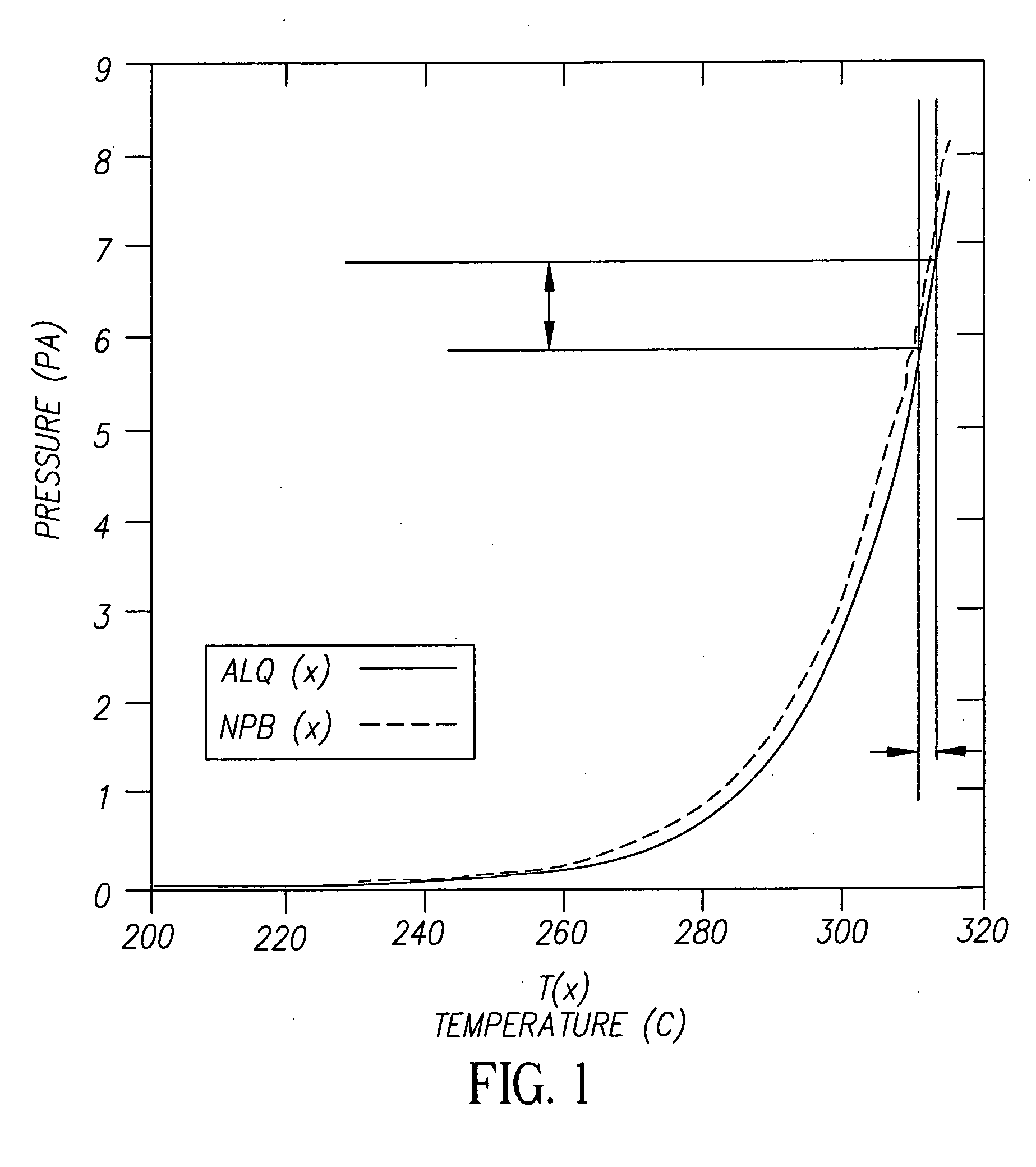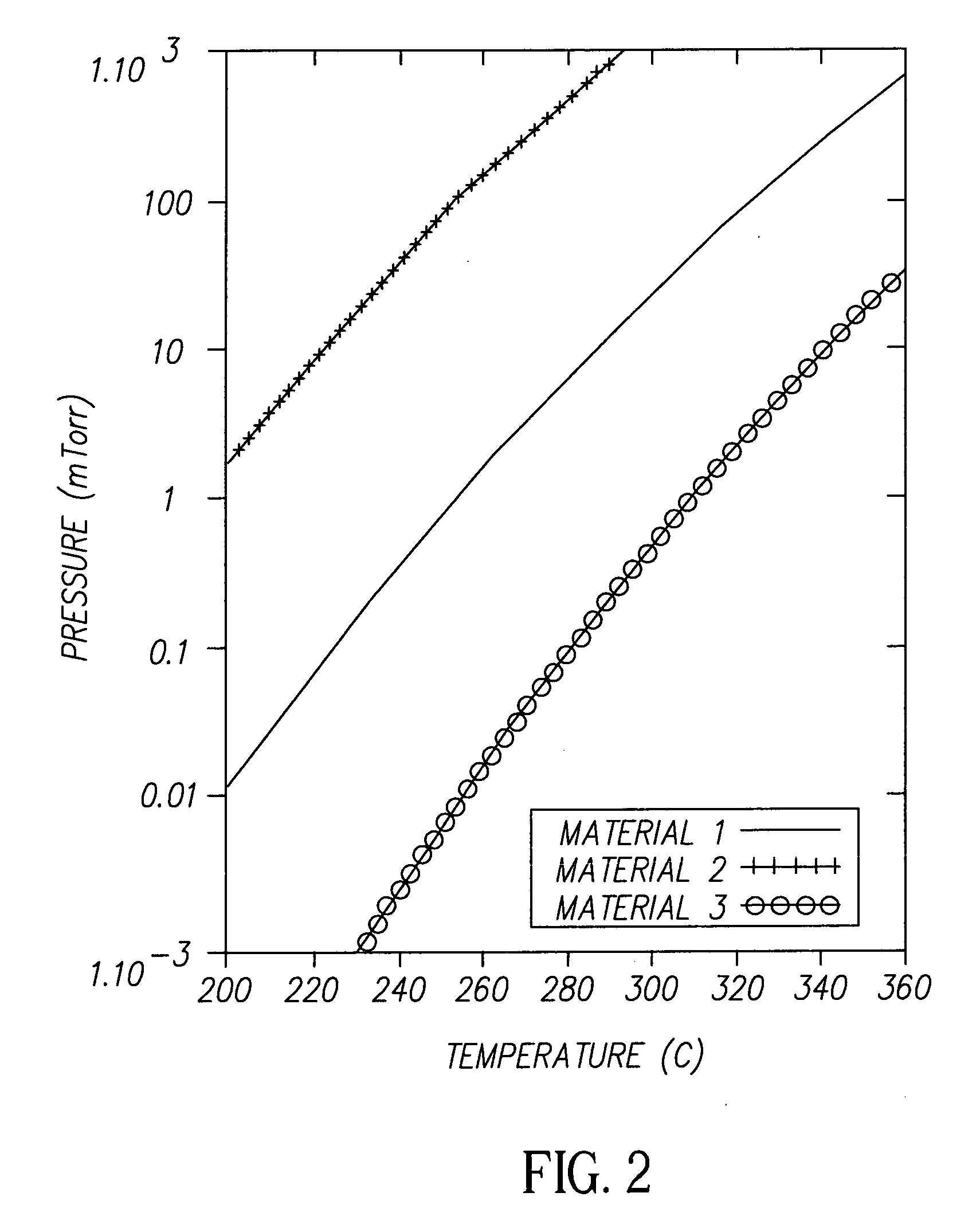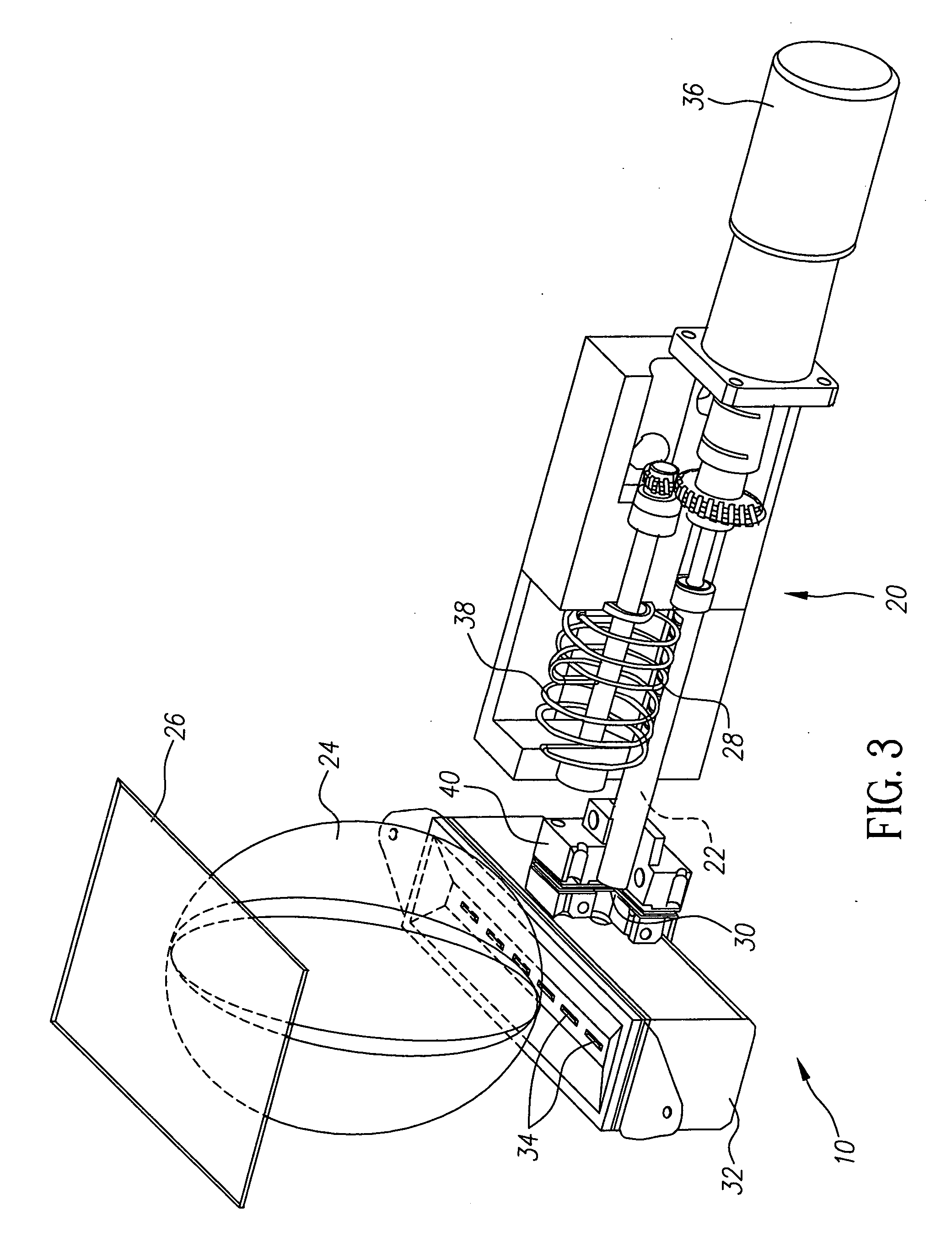Vaporizing material at a uniform rate
a technology of vaporization rate and vaporization method, which is applied in the direction of electric/magnetic/electromagnetic heating, furnaces without endless cores, coatings, etc., can solve the problems of many hours to achieve equilibrium temperature and stable vapor deposition rate, and the degradation of organic materials used in the manufacture of oled devices is often subject to degradation, so as to minimize the degradation of materials. , the effect of high uniformity
- Summary
- Abstract
- Description
- Claims
- Application Information
AI Technical Summary
Benefits of technology
Problems solved by technology
Method used
Image
Examples
Embodiment Construction
[0025] For the description of the present invention that follows, a number of terms must be defined. A “uniform rate” for vapor deposition on a surface would yield a target layer thickness that is uniform to within at least + / −4%, preferably within + / −2%. A “uniform volume” of vaporized material would be provided when the uniform rate is maintained within this tolerance range. A constant heat flux, or constant (DC) current applied to provide a constant heat flux, would vary from an average value by not more than + / −4%, preferably, not by more than 2%. “Low pressure conditions” are defined as having at least some form of vacuum, that is, less than atmospheric pressure conditions.
[0026] Referring to FIGS. 3 and 4, there are shown perspective cross-sectional views of material feeding and vaporization components in a vapor deposition apparatus 10 according to one embodiment of the present invention. Feeding apparatus 20 utilizes an auger screw 28 to urge vaporizable material 22 forward...
PUM
| Property | Measurement | Unit |
|---|---|---|
| temperature | aaaaa | aaaaa |
| temperature | aaaaa | aaaaa |
| vaporization temperature | aaaaa | aaaaa |
Abstract
Description
Claims
Application Information
 Login to View More
Login to View More - R&D
- Intellectual Property
- Life Sciences
- Materials
- Tech Scout
- Unparalleled Data Quality
- Higher Quality Content
- 60% Fewer Hallucinations
Browse by: Latest US Patents, China's latest patents, Technical Efficacy Thesaurus, Application Domain, Technology Topic, Popular Technical Reports.
© 2025 PatSnap. All rights reserved.Legal|Privacy policy|Modern Slavery Act Transparency Statement|Sitemap|About US| Contact US: help@patsnap.com



